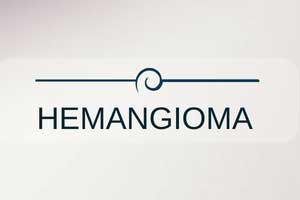- Home
- Editorial
- News
- Practice Guidelines
- Anesthesiology Guidelines
- Cancer Guidelines
- Cardiac Sciences Guidelines
- Critical Care Guidelines
- Dentistry Guidelines
- Dermatology Guidelines
- Diabetes and Endo Guidelines
- Diagnostics Guidelines
- ENT Guidelines
- Featured Practice Guidelines
- Gastroenterology Guidelines
- Geriatrics Guidelines
- Medicine Guidelines
- Nephrology Guidelines
- Neurosciences Guidelines
- Obs and Gynae Guidelines
- Ophthalmology Guidelines
- Orthopaedics Guidelines
- Paediatrics Guidelines
- Psychiatry Guidelines
- Pulmonology Guidelines
- Radiology Guidelines
- Surgery Guidelines
- Urology Guidelines
Hemangioma specialist to manage high risk infantile hemangiomas : AAP Guidelines

The American Academy of Pediatrics (AAP) has published new clinical practice guideline for the management of infantile hemangiomas. These clinical guidelines for the management of IHs have been developed by Daniel P. Krowchuk, MD, from the Wake Forest School of Medicine in Winston-Salem, North Carolina, and colleagues.The new clinical practice guideline was published in Pediatrics.
The guideline says that “unlike many diseases, management of IHs is not limited to one medical or surgical specialty. A hemangioma specialist may have expertise in dermatology, hematologyoncology, paediatrics, facial plastic, and reconstructive surgery, ophthalmology, otolaryngology, pediatric surgery, and/or plastic surgery, and his or her practice is often focused primarily or exclusively on the pediatric age group.”
Some key recommendations include:
- Infantile hemangioma associated with life-threatening complications, functional impairment or ulceration or risk thereof, structural anomalies (e.g., in PHACE syndrome or LUMBAR syndrome), or permanent disfigurement is high risk. Once the hemangioma is classified as high risk, the patient should be evaluated by a hemangioma specialist as soon as possible.
- Imaging should be done only when the diagnosis is uncertain, there are ≥5 cutaneous hemangiomas, or associated anatomic abnormalities are suspected. Ultrasonography is recommended as the initial imaging modality when the diagnosis of IH is uncertain. MRI may be done if associated structural abnormalities (e.g., PHACE syndrome or LUMBAR syndrome)
- Oral propranolol (2-3 mg/kg/day) is the first-line agent for hemagiomas requiring systemic treatment; but, in the presence of comorbidities or adverse effects, a lower dose is recommended.
- Propranolol is to be administered with or after feeding and doses be held at times of diminished oral intake or vomiting to reduce the risk of hypoglycemia.
- Clinicians should evaluate patients for and educate caregivers about potential adverse effects of propranolol, including sleep disturbances, bronchial irritation, and clinically symptomatic bradycardia and hypotension.
- When propranolol is contraindicated or response to propranolol is poor, oral prednisolone or prednisone may be used.
- Intralesional injection of triamcinolone and/or betamethasone can be given to treat focal, bulky hemangiomas during proliferation or if they are located in certain critical anatomic areas such as the lip.
- In cases of thin and/ or superficial hemangiomas, topical timolol maleate may be prescribed.
- Surgery and laser therapy may be indicated if the lesion has failed to improve with local wound care and/or pharmacotherapy; the lesion is well localized, and early surgery will simplify later reconstruction (e.g., a prominent hemangioma involving the ear or eyelid); the lesion is well localized in an anatomically favorable area or resection is likely to be necessary in the future, and the resultant scar would be the same
- Clinicians should educate parents of infants with the hemangioma about the condition, including the expected natural history, and its potential for causing complications or disfigurement.
The subcommittee hopes this clinical practice guideline will be viewed as an effective guide to IH triage and management and to minimize poor outcomes from higher-risk IHs.
For more details click on the link: doi: 10.1542/peds.2018-3475

Disclaimer: This site is primarily intended for healthcare professionals. Any content/information on this website does not replace the advice of medical and/or health professionals and should not be construed as medical/diagnostic advice/endorsement or prescription. Use of this site is subject to our terms of use, privacy policy, advertisement policy. © 2020 Minerva Medical Treatment Pvt Ltd